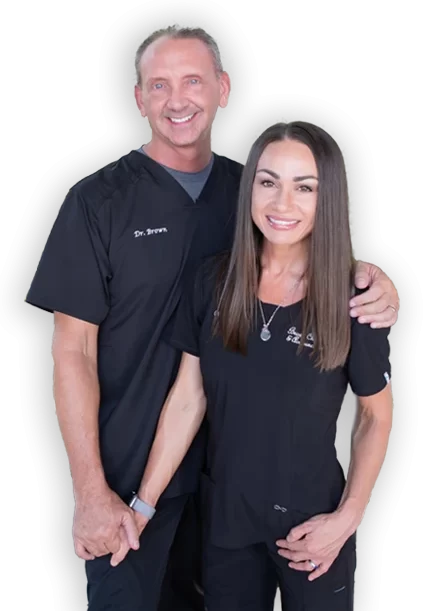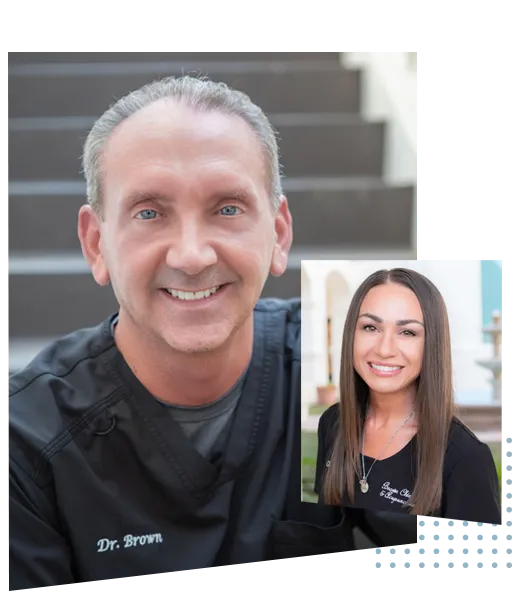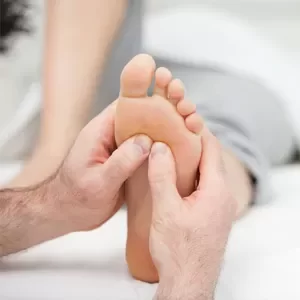Chiropractor Gilbert AZ
Brown Chiropractic & Acupuncture, PC
If you are in search of a chiropractor in Gilbert AZ, it makes sense to choose an experienced doctor you can trust. Our comprehensive approach at Brown Chiropractic & Acupuncture, PC in Gilbert AZ ensures that we give you the best opportunity to achieve health. Dr. Steven Brown and his wife, Olivia, have been providing Chiropractic, Acupuncture and Massage Therapy services to the Phoenix Metro area for over 28 years.
You do not have to be a Chiropractic patient in our office to be a massage therapy patient in our office. Our massage therapists will not pressure you to become a Chiropractic patient.
Ten Reasons We Should be Your Chiropractic Office
1. Our average patient is out of pain in 1-6 treatments. After your condition has been resolved, you can return for maintenance or return as needed. Unlike some Chiropractic offices, we will not pressure you to come in 2-3 times per week for the rest of your life.
2. Dr. Brown is not your average Doctor of Chiropractic. He has 28 years of experience and is certified in Acupuncture, Physical Medicine, and Dry Needling.
3. For patients with neck or lower back disc issues, Dr. Brown provides cervical and lumbar spinal decompression.
4. Dr. Brown does not x-ray every patient and does not take x-rays in the office. If Dr. Brown determines you need x-ray, MRI, or CT imaging, he will order it from a professional radiology facility, it will be read by a professional radiologist, and it will likely be covered by health insurance.
5. We are a Doctor’s office first, and a Chiropractic office second. If we do not feel we can treat your condition, we will you refer to the appropriate specialist.
6. We also offer Massage Therapy. Our Lead Massage Therapist, Olivia, has been in practice for over 20 years. She hires and trains the other massage therapists in our office.
7. You do not have to be a Chiropractic patient in our office to be a massage therapy patient in our office. Our massage therapists will not pressure you to become a Chiropractic patient.
8. Dr. Brown performs Shockwave therapy for stubborn musculoskeletal conditions, such as frozen shoulder. A highly effective therapy for most conditions involving ligament or tendon injury.
9. We are one of the few Chiropractic offices in the Phoenix Metro area open on Saturdays. We are open every other Saturday morning from 9am to 1pm.
10. We accept most insurance and have reasonable prices for those without insurance.
Veterans Community Care Program
The Veterans Community Care Program (formerly the Veterans Choice Program) is designed to improve timely access to healthcare for Veterans by allowing Veterans to use approved health care providers outside of the VA. We provide Chiropractic, Acupuncture and Massage Therapy treatments when they are authorized by the VA through the Veterans Community Care program.

Make an Appointment
To schedule an appointment in our office, please see our First Visit Information page. Since we get fast results with a small number of treatments, patients from all over the Phoenix Metro area visit our office in Gilbert AZ. As many of our patients come from across town, we are open on Saturdays so crosstown patients can make it to our office without fighting Phoenix traffic on weekdays.
Call us today at (480) 377-1226 or make an appointment online.









